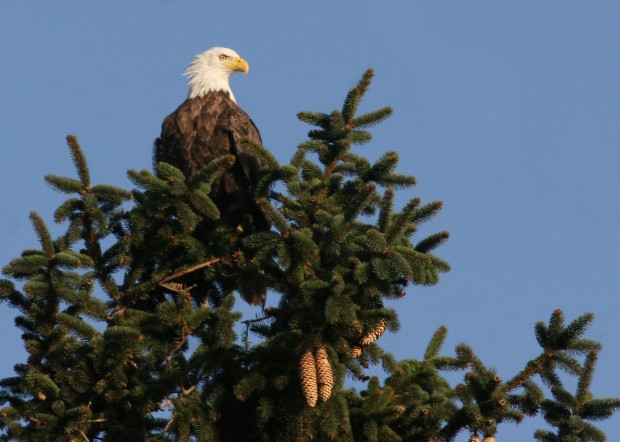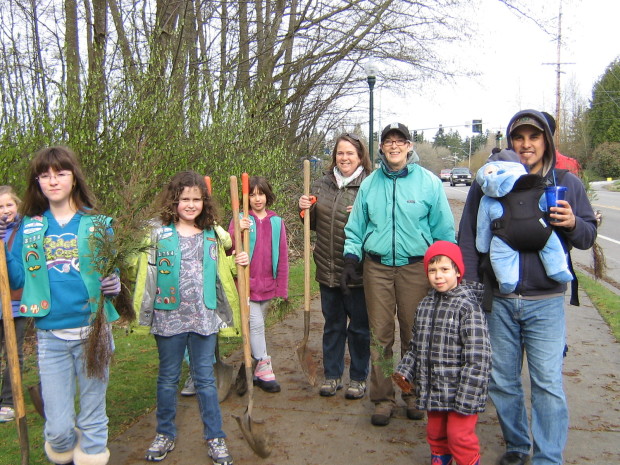We have much more to do and your continued support is needed now more than ever.
Seeds of National Wildlife Week Sprout for Earth Day Celebration
While celebrating National Wildlife Week in March, we told you about the many roles of trees in the lives of wildlife. Birds, insects and critters — from the diminutive shrew to the huge moose — rely on trees, just as we do in our daily lives. After dedicating National Wildlife Week to a celebration of trees, we also set a goal of planting 75,000 trees this year.

Branching Out for Wildlife

In Clermont, Flordia, 300 trees were planted to support the Florida Scrub-Jay (an threatened species). Boy and Girl Scouts, students for the local elementary school and adult volunteers worked together to improve wildlife habitat, by planting more food sources and places for the jays to raise their young. These birds — unlike the common bluejay — are less afraid of humans and enjoy some interaction, as 10-year-old volunteer Lauren discovered. Our volunteers planted scrub oaks, red cedars and longleaf pine trees.
In Mukilteo, Washington, about 40 kids and their parents planted about 200 conifer trees on March 23, a beautiful sunny day. When participants arrived to do the planting, Mukilteo Community Development Director Patricia Love welcomed volunteers and explained why we were planting trees, as team members demonstrated how to plant and talked about the benefits of the trees to forest animals. Planting in a forest understory is not the easiest type of planting to do, but the kids were enthusiastic and planted from one to 10 plants each.

Children from the Harbour Pointe Middle School who were there to perform community service helped during the two-hour event, but most kids planted and then did a scavenger hunt or vice versa. All the plants were planted and each planter was given flagging to tie onto the tree limbs to locate the plants for follow-up maintenance. Planting western red cedars, western hemlocks and grand firs will add to the evergreen forest of the this northwest community and help with water quality for the Puget sound.
![]() Planting trees continues to be a vital way to make a difference for not only wildlife but future generations, who will have a cleaner and better environment due to our work today. You can still donate today to help wildlife and those future generations>>
Planting trees continues to be a vital way to make a difference for not only wildlife but future generations, who will have a cleaner and better environment due to our work today. You can still donate today to help wildlife and those future generations>>





















